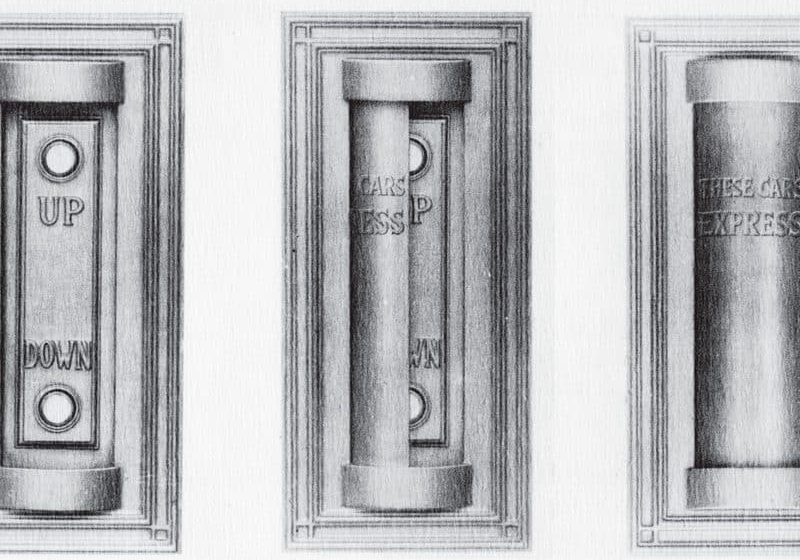Bullish on Brazil
Aug 1, 2014

Urban migration and a growing middle class, not to mention the FIFA World Cup and 2016 Olympics, are fueling growth for vertical-transportation companies in South America’s largest market.
Brazil’s demand for elevators and escalators recently surpassed 15,000 units annually[1], and that is expected to continue, thanks to urbanization and a growing middle class. Manufacturers such as Otis and ThyssenKrupp Elevator got a massive boost from the Fédération Internationale de Football Association (FIFA) World Cup over the summer. Billions of dollars worth of equipment was installed at stadiums and airports to pave the way for millions of visitors (see “Rolling Out the Red Carpet,” page 56). The 2016 Olympics in Rio de Janeiro is generating even more work. Hyundai Elevator, for example, recently won a contract to install 159 elevators in the event’s Athletes’ Village.[2]
Companies are expanding their Brazilian footprint through acquisitions, new factories and additions. Among recent developments:
- In the next several months, Otis plans to open a 200,000-sq.-ft. Gen2® factory in São Paulo.
- In April, Hyundai Elevator completed construction of a factory with annual capacity of 3,000 units in São Leopoldo.
- In November 2013, Anlev Lifts and Escalators, a division of the Analogue Group, opened a sales office in São Paulo.
- In September 2013, Mitsubishi Electric Corp. purchased Brazilian company LGTech Elevadores S.A., launching operations under a new name, Melco Elevadores Do Brasil, S.A.
- In March 2013, escalator supplier EHC Global announced the launch of EHC Brazil and a new facility in Cambé, citing both the FIFA World Cup and the Olympics.
- In 2012, Otis expanded its São Paulo factory as part of a restructuring that saw other factories, such as ones in Europe, close.
The few manufacturers without a presence in Brazil acknowledge the country is on their radar. KONE sold its small Brazil operation in the early 2000s, but says it would be interested in reentering the market should the right opportunity arise.
Andreas Witte, elevator component manufacturer Wittur Group’s managing director for Latin America, describes Brazil’s current market as strong. “It has its ups and downs, but it is the biggest single market in Latin America,” Witte said. “The total of new installations in Latin America without Brazil is the sum of new installations in Brazil itself.” New installations are driving business, he said, but modernizations have shown momentum recently.
Energy Efficiency Drives Business
ThyssenKrupp Elevator foresees a 5% drop in new-equipment sales in Brazil in 2014. It expects a slight increase in modernization and service — including technical assistance. Whether it’s a new installation or modernization, “technologies that save energy are a significant trend in the Brazilian market,” the company notes. CEO Andreas Schierenbeck elaborates:
“As in other emerging economies, the shortage of electric power in Brazil is a reality, so modernizing elevators with energy-saving components is an interesting contributor to reducing the country’s energy bill. We are bullish to support modernizations that use advanced energy-saving technologies, which are available throughout our large local manufacturing and services organization.”
ThyssenKrupp Elevator modernized the Brazil Central Bank building’s system in São Paulo with energy-saving gearless machines, as well as advanced destination-dispatch technology.
Savings can be significant, the company notes. The system in the Eldorado Business Tower in São Paulo, for example, provides 1,600 kW in monthly savings per elevator, or a 37% reduction in energy consumption, compared with a typical unit. “Green” technology is also being implemented in 34 of 39 elevators at the WTorre commercial development, under construction in São Paulo. ThyssenKrupp Elevadores states:
“The project includes 31 wings that are linked by suspended walkways, with a total of 172,000 m2 of space. Located on Marginal Pinheiros in the Morumbi neighborhood, a region in the city that has a growing corporate real estate market, this is a Triple-A construction project that meets the requirements of a [Leaderships in Energy & Environmental Design] project with a ‘silver’ certification. In addition to the elevators, ThyssenKrupp sold 10 Velino escalators for the WTorre project.”
ThyssenKrupp Elevator has been active in Brazil for 70 years. Its headquarters are in Porto Alegre, and its industrial park is in Guaíba. Facilities manufacture items for both the domestic and Latin American markets. The company has more than 4,000 employees and nearly 60 branch and service locations. With a portfolio comprising passenger, goods, automotive and home elevators; escalators and moving walks; and airport buses and boarding bridges, ThyssenKrupp Elevator reports R$1 billion (US$441 million) in revenue in Brazil during the 2012-13 fiscal year.
Schindler: A Huge Player in Brazil
A huge player in Brazil is Schindler, which has had a presence in the country for nearly a century. Schindler’s 1999 acquisition of Atlas in Brazil strengthened its market hold. Today, Schindler’s Brazilian presence comprises:
- More than 4,700 employees
- Two manufacturing facilities
- Six regional offices and three branch offices
- 150 service centers
- A corporate and technical training center in São Paulo
Schindler reports it has sold more than 185,000 units in Brazil to date, and work continues. In August, it was announced Schindler would provide nine elevators — eight 5500 units and one 3300 — to the Flamboyant Business Park in Goiânia. Both models are machine-room-less and provide significant energy savings — up to 70% for the 5500, for example, according to Schindler.
No matter the job, if it is in Brazil, chances are good the equipment is energy efficient. The 174 units Otis supplied to seven World Cup stadiums and the São Paulo–Guarulhos International Airport, for example, are outfitted with energy-saving ReGenTM drives.
Hot Spots
Brazil encompasses 8.5 million km2, making it the fifth-largest country in the world.[3] Its heavily populated southern and southwestern regions, particularly Rio de Janeiro and São Paulo, are seeing the most construction activity, Witte said. In May, Hyundai Elevator said it was negotiating to install elevators at the 38-story Trump Tower in Rio de Janeiro.
Besides the two major cities, Baineário de Camboriú, a resort town overlooking the South Atlantic, is among tall-building hot spots. Known as the “Brazilian Dubai” due to its plethora of skyscrapers and wealthy tourists[4], the city will soon be home to Brazil’s tallest buildings. Residential towers planned or underway include One Tower, 280 m tall and 77 stories; Infinity Coast Tower, 240 m tall and 66 stories, scheduled for completion in 2015; Boreal Tower, 220 m tall and 55 stories; and Sky Tower, 210 m tall and 55 stories, scheduled for completion in 2017.[5]
Interestingly, the tallest building in Brazil is not new. It is the former Palacio W. Zarzur (Mirante do Vale), a 170-m-tall, 51-story retail and office building built in São Paulo in 1967,[5] a time of economic resurgence during the 1960s and 1970s known as the “Brazilian Miracle.” The industrialization, technological advances and economic growth that took place during that time enhanced Brazil’s reputation around the world.[6] Throughout its history, Brazil has built a reputation of having more success employing “soft power” — the ability to attract others to a desired outcome — rather than hard power — the ability to compel others to a desired outcome, such as through military strength — to grow its economy.[6]
Challenges Remain
Despite the positive outlook, challenges remain. Companies that import products and components into Brazil must deal with high import taxes, Witte notes, and exchange-rate that can be troublesome. He illustrates:
“Up to June-July of last year, the (Brazilian real) exchange rate to the Euro was at about 2.60, and, by the end of the year was at 3.20. This means that there is over 20% you have to absorb or try to pass through to your customers in local currency, which is sometimes difficult or even impossible. So, if your dependency on imported products or components is high, you are very exposed to the exchange rate variance. The expectation for this year and the next is still a further devaluation of the local currency. The same applies to US dollars.”
On the upside, Brazil’s commodities, including coffee, soybeans, corn, sugar and biofuels, have been in great demand worldwide over the last two decades. This helped the country quickly snap back from the 2008 global financial crisis.[6] Brazil has the seventh-largest GDP in the world, positioned between the U.K. and the Russian Federation.[6] A culture that features top-notch soccer, an abundance of natural beauty and highly acclaimed telenovelas charm the rest of the world.[6]
But it’s not all a bed of roses. Although the nation has some of the best programs in the world for poverty reduction, and a growing middle class, in certain areas there are still sharp contrasts between the haves and have-nots. Like India’s world-class airports existing side by side with massive slums, Brazil has similar scenarios. In June, Google caught heat for one of its daily “doodles” that depicted a favela, or urban slum, in a cartoonish manner. The doodle was in honor of the FIFA World Cup, which, along with the Olympics, has itself provoked numerous protests, some ending in violence.[6] Furthermore, an overvalued currency reduces the ability of Brazil’s non-commodity-based exports to compete.[6]
None of these challenges, however, are insurmountable.[6] Harold Trinkunas, the Charles W. Robinson chair and senior fellow and director of the Latin America Initiative for Foreign Policy program at the Brookings Institution, notes in his paper, “Brazil’s Rise: Seeking Influence on Global Governance”: “Brazil has an unprecedented set of opportunities to rise: a large economy, considerable soft power, lack of regional rivals, and a network of partners among other rising powers and the developing world.”
If Brazil seizes these opportunities, there is no doubt the global vertical-transportation industry will be right there with it.
References
[1] “Mitsubishi Electric Enters Brazilian Elevator and Escalator Market,” Mitsubishi Electric, September 12, 2013.
[2] The Korea Times, “Hyundai Elevator Aims at Global Expansion,” Park Si-soo, May 26, 2014.
[3] CIA World Factbook.
[4] www.correiodopovo.com.br,“Dubai is Here,” December 28, 2011.
[5] Council on Tall Buildings and Urban Habitat, The Skyscraper Center, Tall Building Database: www.skyscrapercenter.com/create.php
[6] “Brazil’s Rise: Seeking Influence on Global Governance,” Harold Trinkunas, Brookings Institution, April, 2014.
Get more of Elevator World. Sign up for our free e-newsletter.









